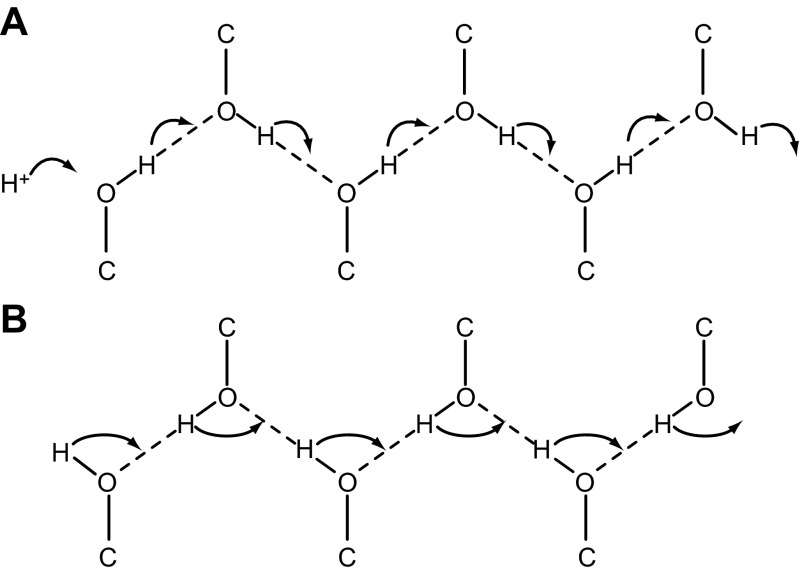Figure 1.
The hydrogen bonded chain (HBC) mechanism for proton conduction through proteins. Shown are hydroxyl groups forming a continuous HBC. A: each proton hops one position along the chain, with the final group releasing a proton into the distal solution. B: after the transfer, the chain is not able to accept another proton from the proximal side until all the groups have reoriented. Permeation of OH− occurs when a proton leaves the distal end of the HBC (neutralizing OH− to form H2O), and the defect migrates by retrograde H+ hopping. [Redrawn from Nagle and Morowitz (365).]

